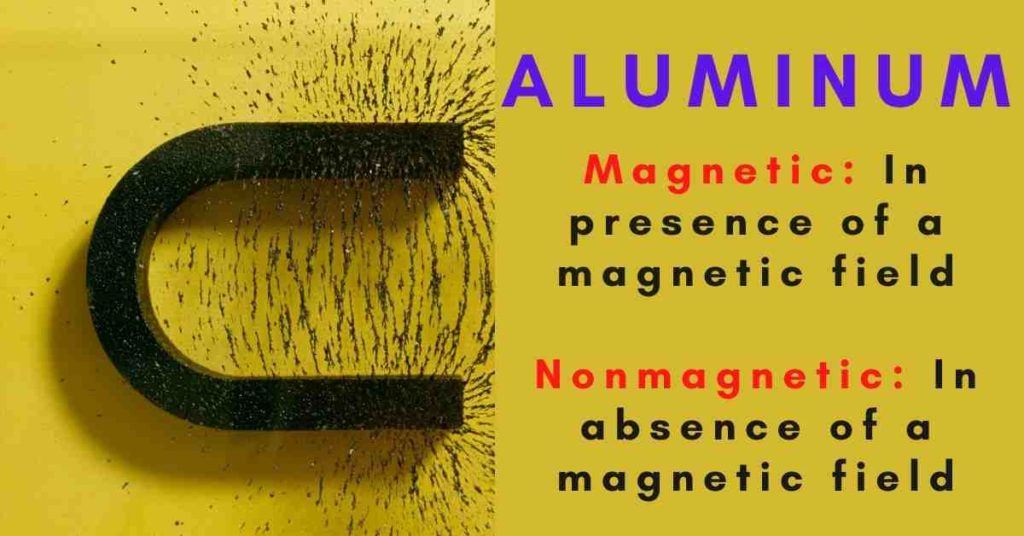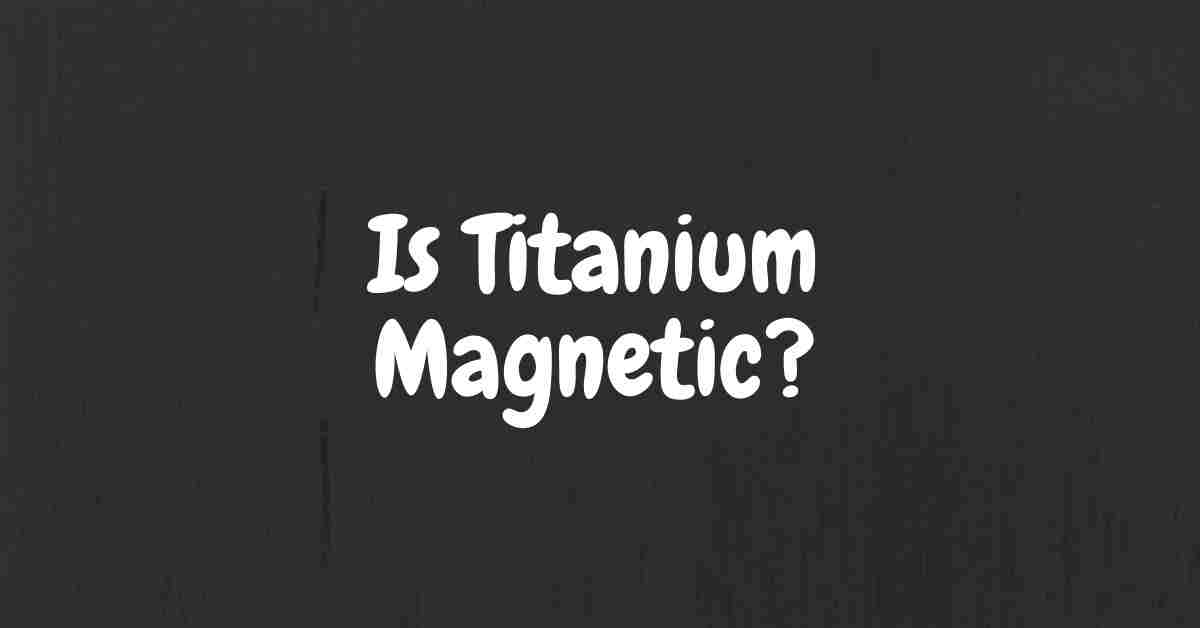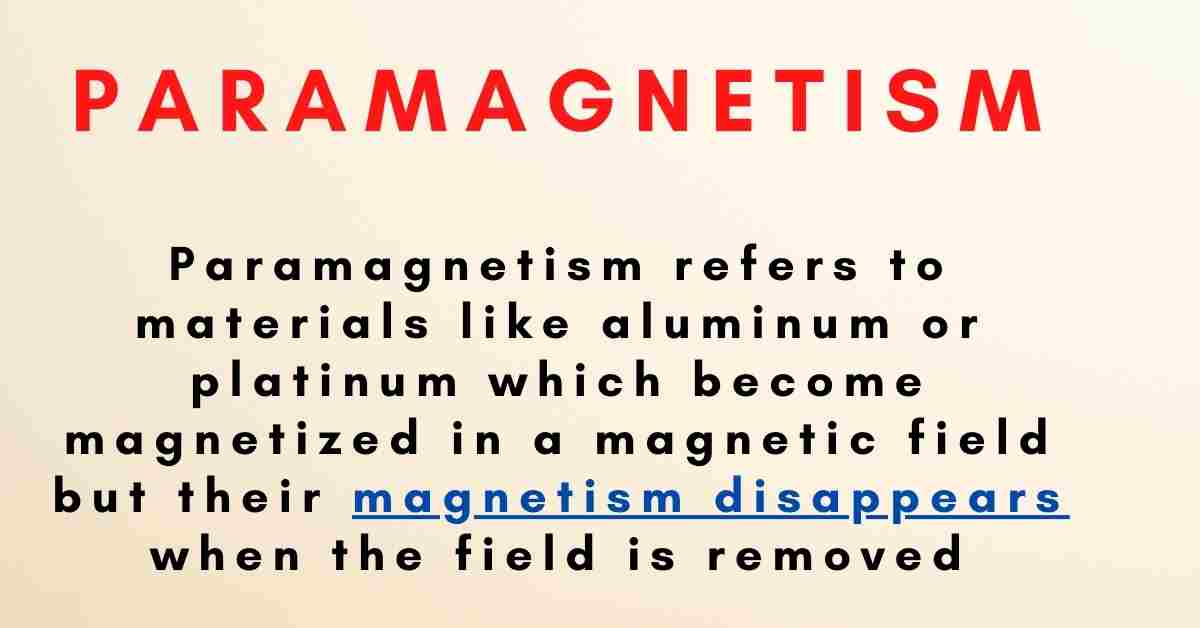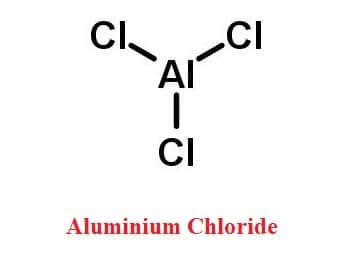Under normal conditions, aluminum (United States English), also known as aluminium (British English), is not magnetic due to its crystal structure. Along with other metals such as magnesium and lithium, it is classified as a paramagnetic substance. Keep reading to know the detailed answer to the question “is aluminum magnetic?”

In other words, without an external magnetic field, aluminum is not magnetic; yet, in the presence of an external magnetic field, aluminum is magnetic. Aluminum becomes “slightly” magnetic as its electron aligns to the magnetic field.
Table of Contents
Why is aluminum not magnetic?
- Aluminum is a silvery-white metal having a number of advantageous features.
- It is light, nonmagnetic, and nonsparking (just like metal).
- In the absence of an external magnetic field, aluminum is not magnetic.
- When a magnetic field is applied, it becomes “somewhat” magnetic as its electrons align with the magnetic field.
- Due to thermal motion, the alignment of the electrons within the material (aluminum) is randomized, and thus the net magnetic force cancels out.
- Aluminum is not found free in nature, despite its abundance in the earth’s crust.
- It’s easy to shape, process, and cast.
Aluminum Molar Mass
The molar mass of Aluminum is 26.982 g/mol.
Aluminum is about one-third the weight of steel. Components may be made thicker and stronger while remaining lightweight in cars and other uses.
Paramagnetic Materials
When a paramagnetic material is placed in a magnetic field, its individual dipoles tend to align with the field and therefore with one another, causing the substance to become magnetic. The paramagnetic substance is attracted to the magnetic field when this happens.
The difference is that when the external magnetic field is removed from a paramagnetic substance, the individual dipoles lose their orientation. Thermal motion, on the other hand, takes control and reorients them at random. As a result, a paramagnetic substance possesses a net magnetic moment only when it is in a magnetic field.
Permanent Magnet
- Permanent magnets are materials in which a magnetic field is produced due to the material’s intrinsic structure.
- Inside atoms and crystals, you have both electrons and the nucleus of the atom.
- Both the nuclei and the electrons operate as tiny magnets, spinning pieces of electric charge with magnetic fields built into the particles.
- The orbits of the electrons as they travel around the nucleus produce a magnetic field as well. As a result, the magnetic fields of permanent magnets are the summation of nuclear spins, electron spins, and electron orbits.
- Magnetic fields in many materials point in all directions at random and cancel each other out. Therefore, there is no permanent magnetism. However, in particular, in materials that are known as ferromagnets, all of the electrons’ spins and orbits line up, leading the materials to become magnetic.
- This is your standard iron, cobalt, and nickel. Permanent magnets are constrained by the material’s structure. A permanent magnet’s strongest magnetic field is at 8,000 gauss. The Magnet Lab’s strongest magnets are 450,000 gauss, which is about 50 times stronger than that.
Ferromagnetic Materials
Ferromagnetism is a scientific phenomenon in which some electrically uncharged materials strongly attract others. Two materials, lodestone (or magnetite, an oxide of iron, Fe3O4) and iron, both present in nature, have the capacity to acquire such attractive powers, and they are often called natural ferromagnets.
Related Links
Electromagnetic Force
The Magnetic Field Of A Wire
Electric Field Units & Definition
Biot Savart Law: Statement, Derivation & Applications
is b2 paramagnetic or diamagnetic?
Is Aluminum Conductive?
Frequently Asked Questions
1. Is gold magnetic?
For a long time, gold was thought to be a non-magnetic metal. However, scientists have found that gold can be magnetized using heat. Tohoku University researchers have found that gold can be magnetized by applying heat [Reference].
2. Is brass magnetic?
Brass is an alloy made up of zinc (Zn) and copper (Cu). These two elements are not magnetic in any way. We get a non-magnetic compound when we combine zinc and copper to make the alloy brass. As a result, brass isn’t magnetic.
3. Is copper magnetic?
Copper is diamagnetic, which means it repels magnets rather than attracts them. Ferromagnetic metals are those that are permanently magnetic, such as iron. As a result, copper is not magnetic.
4. Why is iron a magnetic material but aluminum isn’t?
In iron, so-called ‘unpaired spins’ interact with one another. This interaction ensures that atoms’ magnetic moments are always aligned parallel to one another. The net magnetization of iron is the total of all these tiny magnetizations. In contrast, Aluminium is an example of a paramagnetic substance.
5. What do you call metals that are attracted to magnets?
The term ferromagnetic refers to materials that can be magnetized and are also strongly attracted to a magnet (or ferrimagnetic). The elements iron, nickel, cobalt, and several rare-earth metal alloys and naturally occurring minerals like lodestone fall into this category.
6. Do magnets stick to stainless steel?
Stainless steels are iron-based alloys best known for their corrosion resistance, mostly due to the steel’s high chromium content. Because of this difference, ferritic stainless steels are usually magnetic, but austenitic stainless steels aren’t.
7. Is Aluminum Magnetic?
Aluminum does not attach to magnets in our experience (neither does copper). When exposed to high enough magnetic fields, most stuff will display some magnetic attraction. However, under normal conditions, aluminum does not appear to be magnetic.
8. Does a magnet stick to nickel?
Nickel (Ni) is one of the few metals that is ferromagnetic. They are ferromagnetic, which means they are attracted to magnets and can be magnetized. Iron, nickel, cobalt, gadolinium, neodymium, and samarium are the only magnetic metals.
Conclusion
This article focuses on the question ” is Aluminum magnetic?”
Aluminum is a paramagnetic material. Its magnetic properties depend upon its crystal structure.
It behaves as slightly magnetic in the presence of an external magnetic field as its electrons align to the magnetic field.
More Interesting Topics
H2S Lewis Structure & Molecular Geometry
Perchloric Acid| Is It Super Acid?
Sulfurous Acid Formula & Lewis Structure
Nh3 Molecular Geometry| Trigonal Pyramidal
CO Lewis Structure & Molecular Geometry
SO2 Polar Or Nonpolar
- BCl3 Lewis Structure in four simple steps - November 1, 2023
- PH3 Lewis Structure in four simple steps - October 8, 2023
- PF3 Lewis structure in four simple steps - September 24, 2023



